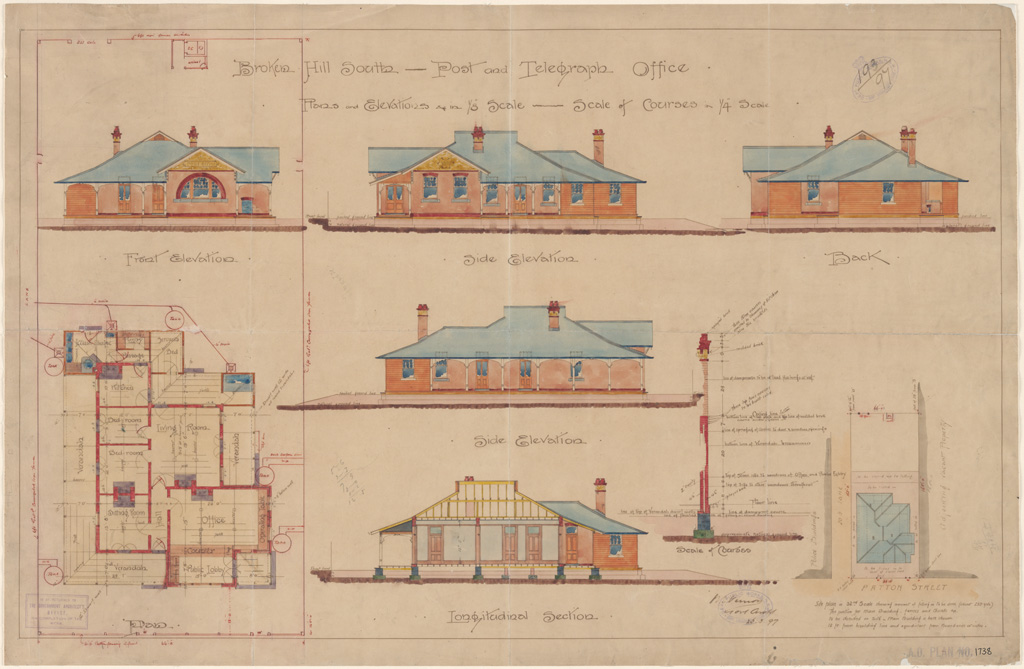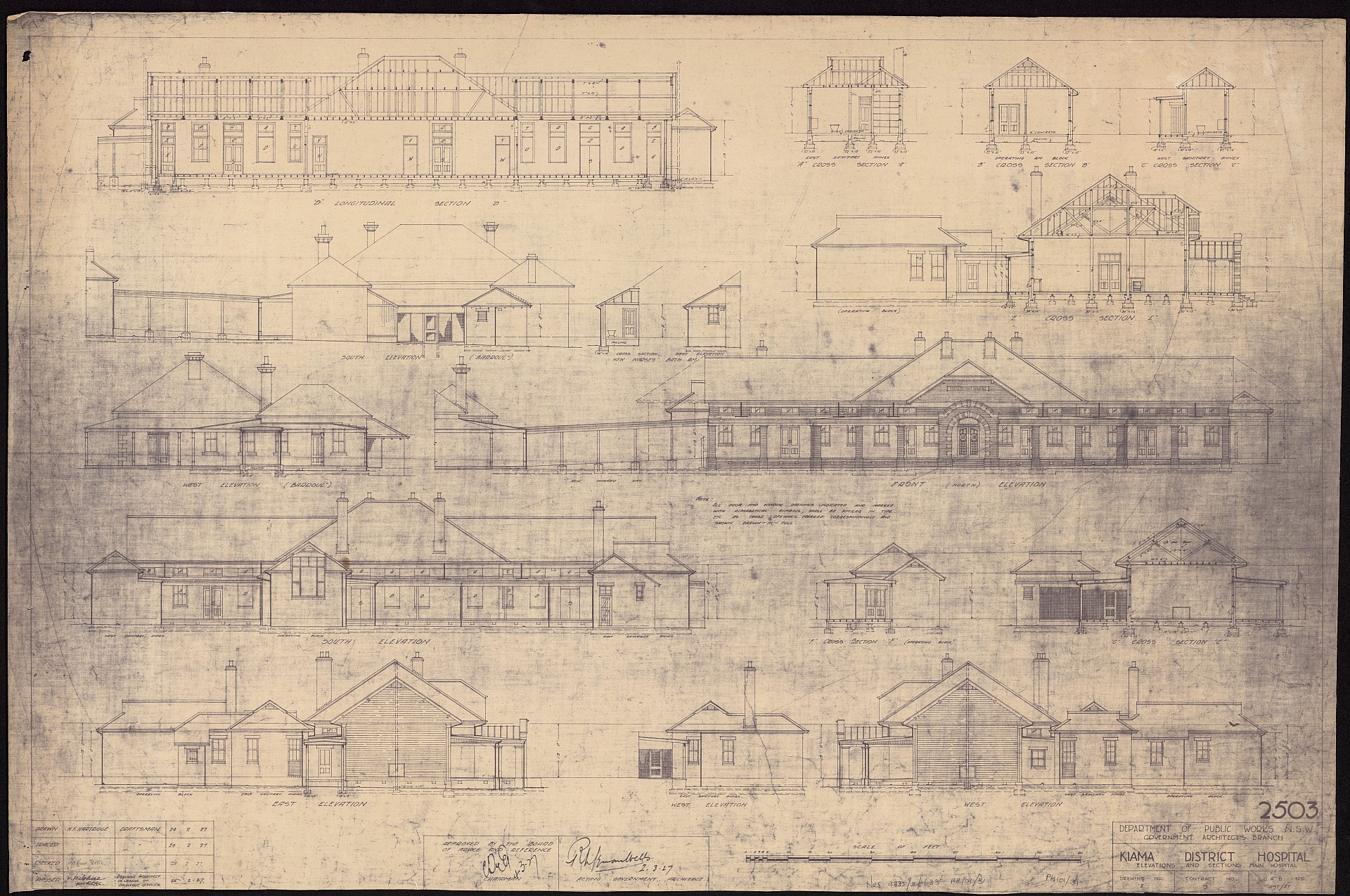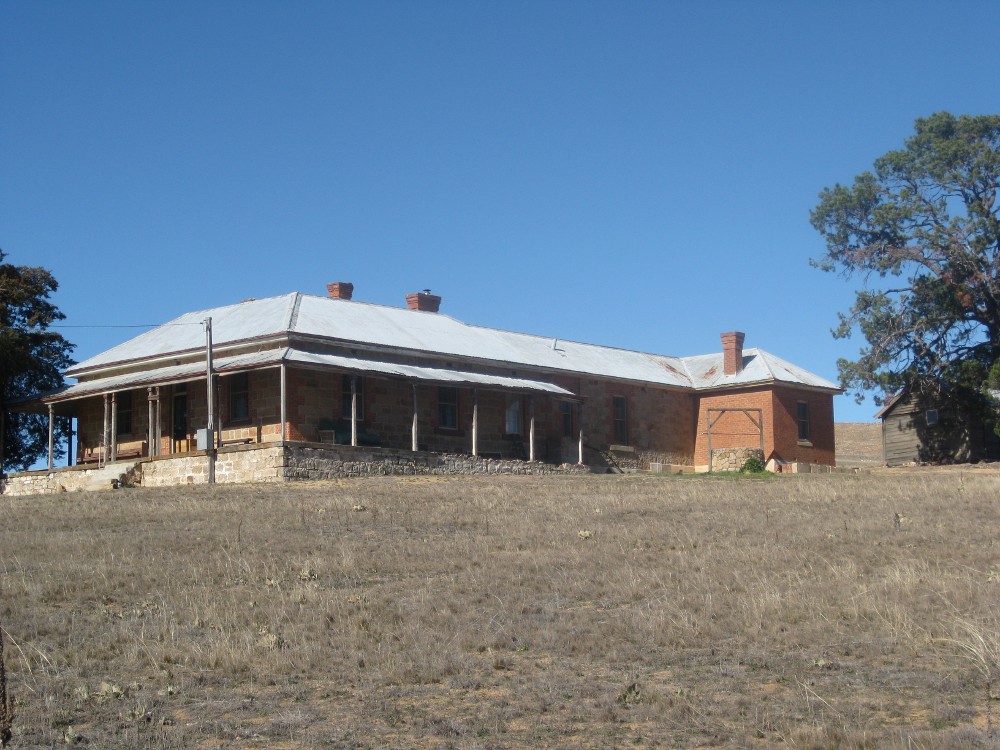School files can be used for your local history research as they very strongly reflect the growth or decline of towns. The school files in our Collection cover both World War I and World War II but particularly reflect the many impacts of World War I. Teachers enlisted and on return took up teaching again; they applied for rent allowances and reimbursement of travelling expenses; and repaired school residences. Women resign or have their employment terminated when they marry as married women were barred from public sector employment. 20th century increases in population saw local members making representations for more buildings or new schools in the area. The files are an excellent source of information, not only for the history of a school but the history of a local community.
In series NRS-4335 Plans of Public Buildings there are 3,400+ plans and over 430 have been digitised and published to our catalogue, Collection Search. This page displays a sample of the digitised plans and includes gaols; hospitals; lands buildings; pilot stations; post and telegraph offices; school buildings and traways buildings.


Theatres and public halls had to be licensed from 1895. The licensing and regulations related to public safety. The theatres and public halls were owned by private individuals, businesses, religious organisations, community groups and councils and they were used for many purposes – dances; social gatherings; showing movies; live entertainment and skating (roller and ice). The files provide information about local businesses – both in relation to theatres and public halls and the construction industry.
Deceased Estates are a financial record of the person’s estate when they die and frequently have very detailed information about a person’s possessions.
Probate packets hold the last will and testament, codicils (additions or revocations to the will) or letters of administration. Other documents include an inventory of assets of the estate; affidavits of death and papers produced by the executor.
Bankruptcy files contain lists of creditors that the bankrupt person owed money to and debtors that owed money to the bankrupt person. Through these lists they show commercial connections in a town, between towns and with Sydney. The bankrupt person provides a statement about why they became bankrupt often providing a picture of what is happening in the town and beyond.
The Royal Botanic Gardens in Sydney celebrated its bicentenary on 13 June 2016. A selection of records are discussed in context in celebration of this milestone being reached.
![Botanic Gardens (L-R cropped and aligned to scale) in 1833, 1867, and 1914. From SR Map 5472, SR Map 5473, and NRS 12060, [9/4699], 15/2043](../../../../sites/default/files/Public%20Access/NowAndThen/Gardens%201833-1914_0.jpg)


